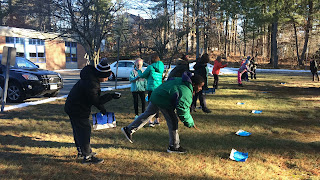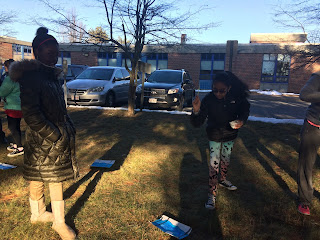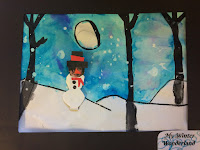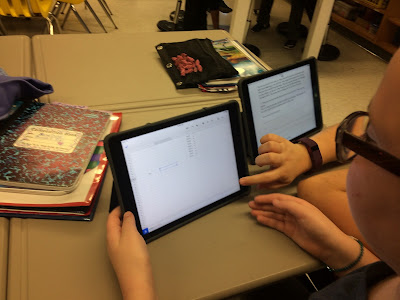Formulas are
Fancy
As we finished traditional division last week and explored spreadsheets, it seems time to consider the wide world of formulas. To calculate grades individually, we divided the points earned by the points possible. To calculate the average, we added up all of the scores and divided by the amount of tests. Where might you find other data to break down? Tell me a story with real data. Show me your formula to solve. You must have an even amount of data. Your question must end like this: What is the mean, median, mode and range? Is there an outlier? What is it? When calculating the mean and median, be sure to write out the formula equation.
I entered Mrs. Lynch's math class at the beginning of the year. So far we have had 6 math tests. I received these percentage grades. 95, 89, 72, 80, 65 and 91. What is the mean, median, mode and range? Is there an outlier? What is it? When calculating the mean and median, be sure to write out the formula equation.
Answer
Mean: 82%
6
(95+89+72+80+65+91)/6 = 82
Median: 84.5%
2
Mode: No data is repeated so there is no mode.
Range: 95-65=30
Outlier: 65 could be an outlier, but there isn't a great deal of data. It is the furthest removed from the rest of the data. And it is the only grade that is a D.




























































































 Students were given a unique opportunity to create their own spreadsheets this week upon completion of our division topic. Division takes on a whole new meaning when it applies to something that matters. Students were walked through a 17 page document with images to create the spreadsheet. They took into account formulas, rules and division to complete. Here's how we did it.
Students were given a unique opportunity to create their own spreadsheets this week upon completion of our division topic. Division takes on a whole new meaning when it applies to something that matters. Students were walked through a 17 page document with images to create the spreadsheet. They took into account formulas, rules and division to complete. Here's how we did it.







 These words are given to them as classwork. Every student writes sentences that are at least 7 words long living up to their newly developed personalized writing goals. The definitions are on the page and they have the direct link to these words in Quizlet. They can use Quizlet to study, take practice tests and play quiz-like games.
These words are given to them as classwork. Every student writes sentences that are at least 7 words long living up to their newly developed personalized writing goals. The definitions are on the page and they have the direct link to these words in Quizlet. They can use Quizlet to study, take practice tests and play quiz-like games. 




 To solve, first we have to estimate. There are many different estimates. 150/5, 135/5 and even 130/5. Any of these estimates are reasonable. To check your work you can do the real division which results in 26 r 4. This meant that 4 of the 5 pages would have 27 stamps and one page would have 26 stamps.
To solve, first we have to estimate. There are many different estimates. 150/5, 135/5 and even 130/5. Any of these estimates are reasonable. To check your work you can do the real division which results in 26 r 4. This meant that 4 of the 5 pages would have 27 stamps and one page would have 26 stamps. Latitude and Longitude
Latitude and Longitude Students have been working with latitude and longitude throughout the course of the week. We reviewed terms such as compass rose, Prime Meridian, cartographer and more. Many children were able to determine coordinates out to minutes and seconds.
Students have been working with latitude and longitude throughout the course of the week. We reviewed terms such as compass rose, Prime Meridian, cartographer and more. Many children were able to determine coordinates out to minutes and seconds.